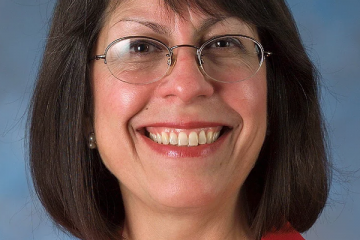"The fascination of any search after truth lies not in the attainment … but in the pursuit, where all the powers of the mind are absorbed in the task. One feels oneself in contact with something that is infinite and one finds a joy that is beyond expression in 'sounding the abyss of science' and the secrets of the infinite mind."
—Florence Bascom, 1928
A leading innovator of geology, Florence Bascom was the second woman to earn a PhD in geology in the United States and the first woman employed by the United States Geological Survey, or USGS. A genuine pioneer in geoscience, she geologically mapped a good portion of the United States, founded a leading academic center of geology, and paved the way for future female geologists.

Image caption: Florence Bascom
Bascom was born in 1862 in Williamstown, Massachusetts, the daughter of a professor and a suffragist teacher. After first earning a bachelor of arts, she next studied at the University of Wisconsin, earning a bachelor of science in 1884, and a master of science in 1887. In 1893, Bascom became the first woman to receive a PhD from Johns Hopkins University, where she was required to sit behind a screen, lest she disturb the men. Her doctorate work explored the origins and formation of the Appalachian Mountains.
Bascom worked as an assistant geologist for USGS and served as an associate editor of the magazine American Geologist. In 1906, the first edition of the "American Men of Science" rated her among the top 100 leading geologists in the country. In 1909, she was promoted to geologist.
Bacsom was the second woman elected to the Geological Society of America, in 1894, and the first woman elected to the Council of the Geological Society of America, in 1924. Another woman would not be nominated until after 1945. She was also a member of the United States National Research Council, as well as the American Geophysical Union.
Bascom founded the esteemed geology department at Bryn Mawr College and taught for 33 years. In addition to teaching, Bascom maintained an active field research program that specialized in petrography. Her research in Piedmont geology remains relevant today. Bascom published more than 40 articles on genetic petrography, geomorphology, and gravels. A crater, an asteroid, and a postglacial lake have all been named in her honor.
This profile comes from the Women of Hopkins exhibit, which honors 23 female trailblazers who have made a mark on society during or after their time at Johns Hopkins. The exhibit, launched in 2016, is on display at the Mattin Center on JHU's Homewood campus and also available online. To learn more about the selection process, and to nominate candidates for inclusion, visit women.jhu.edu/candidates.
Posted in University News











